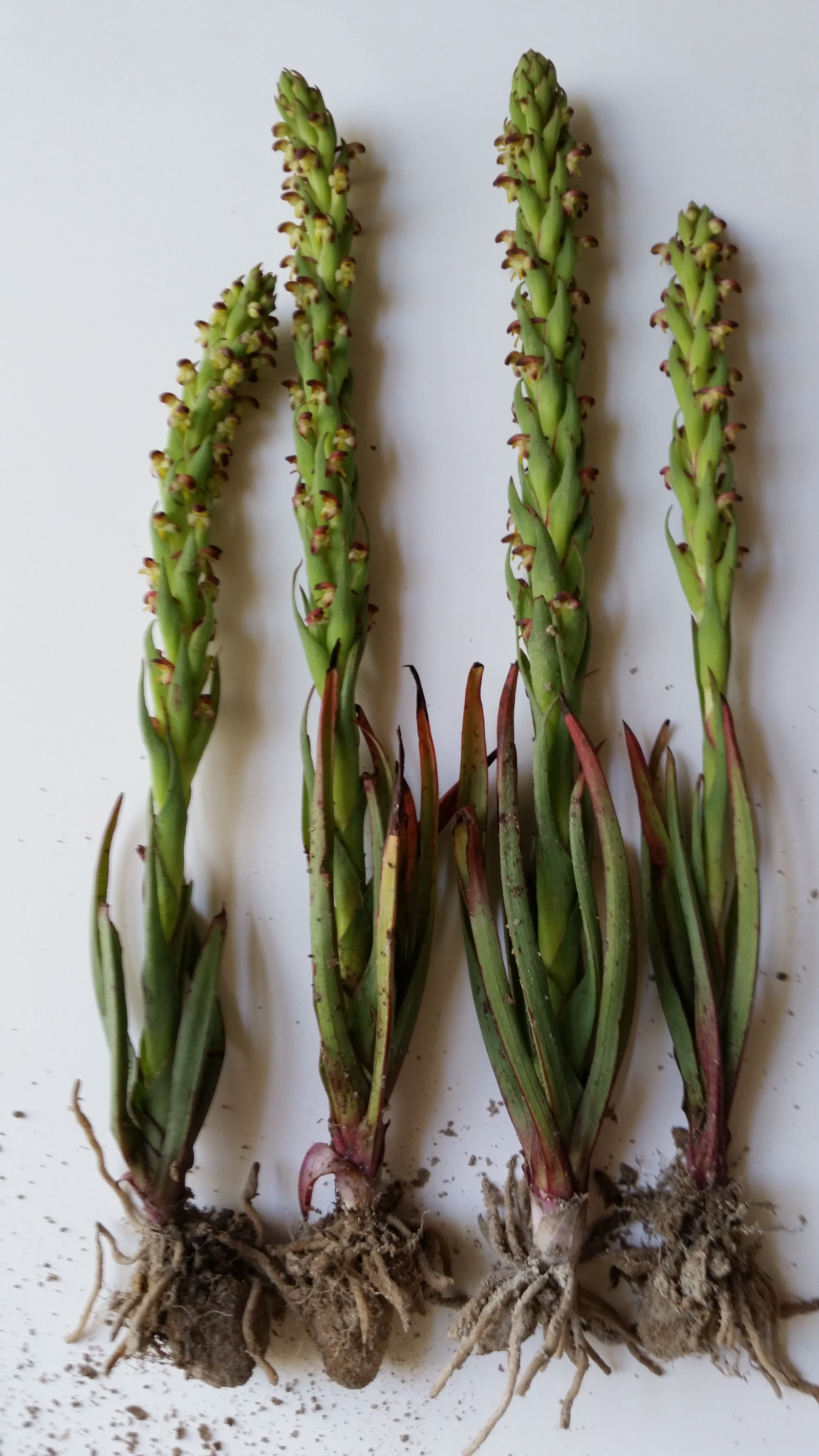South African Weed Orchid – ID first, then dig out!
Posted on 23 November, 2016 by Connecting Country
South African Weed Orchid, Disa bracteata, is flowering now and if you’re quick you can help stop the spread of this emerging and highly invasive weed in our area. Tanya recently found them at Barkers Creek Reservoir in Harcourt and we have some photos to help you identify them. And, if you do find them, practice good bush hygiene so that you don’t spread the infestation.
South African Weed Orchid is a perennial terrestrial orchid with underground tubers. Dormant for much of the year, it sprouts in early spring with a rosette of leaves, followed by flower spikes developing into seeds as the weather drys out during summer.
Stems – erect and fleshy usually 30–50 cm tall. Leaves – a rosette of green leaves with purple undersides, tapering from a broad base to an pointy tip, 5–15 cm long. These weeds are distinct from indigenous Onion Orchids (Microtis spp.) as they have a rosette of leaves, while the native Onion Orchids have one round leaf, often extending above the flower spike.
Flowers – from late October through to December in Victoria. 15– 30 flowers grow on a thick cylindrical spike 5–20 cm long, which resembles a greenish-brown asparagus spear. Flowers very dense and are mostly reddish-brown and yellow with a leafy bract.
Seeds – black, minute and dust-like, contained within the capsular fruit. The species is autogamous (self-pollinating) and thus produces

Treatment by digging out and carefully bagging plant matter is useful in containing the spread of this invasive weed. Photo: Bonnie Humphreys
a large amount of seed per plant. The main form of dispersal is wind, but seed can also be spread on shoes, clothing and vehicles, as well as in water and through animal and soil movement. The seeds can remain viable for years. (This means that one seeding plant this year means many weeds for many, many years to come.) Seed set and dispersal starts at the end of November or as the weather drys out. The seeds continue to mature even if the flower head is picked.
Tubers – generally thought to have 1–3 tubers, similar in appearance to a small potato, about 20 mm in size. The plant also has a mass of fleshy roots and there is no main tap root.

The weed orchid has 1–3 tubers about 20 mm in size also has a mass of fleshy roots and there is no main tap root. Photo: Bonnie Humphreys
Treatment – Manual removal requires digging up and removing all parts of the plant, including the tuber, leaves and flowers. The plant material must be bagged securely (e.g., in a snap-lock bag) to prevent the fine dust-like seed from spreading further.
Currently this weed has been recorded in relatively small numbers in Chewton, Redesdale, Elphinstone, Taradale, Walmer, Barkers Creek, Sutton Grange, Ravenswood and Harcourt.
For further reading see this link for more information and reading references see page 6 of this 2009 edition of Weedscene magazine.







I removed a single Disa bracteata from a private property in Maldon about five years ago, and have not seen it on the property since.
Thanks for the weekly news – its interesting to see what is happening over your way – and thanks for the article. We had seen a few weed orchids at Mount Piper NCR near Broadford in recent years and digging them out has been successful. BUT this year they have suddenly increased to a few hundred. Friends of Mount Piper and PV crew have dug out all the plants we could find so fingers crossed. A landholder on the other side of Broadford has reported many hundreds – possibly thousands. He has been cut and painting but that is not much quicker than digging them out. What next? Where have they suddenly come from?
I removed about 5 or 6 of these from the Montgomery Street Grasslands..
All too true. I hope we haven’t missed the best time to attack this weed (ie. 1st infestation). BUT be very careful. Disa bracteata can look very like a whole group of local native orchids – the Microtis species (onion-orchids). The web address has a picture of one of the most common of the local onion-orchids. They do quite well in some disturbed situations, nut are usually distinguishable as they do not have the cluster of linear leaves that Disa has, plus the extended maroon tip of the Disa flower cluster is distinctive.
Thank you for putting this article in. Disa is a very bad weed. It is really spreading more and more each year. The seeds have multiple dispersal mechanisms, wind, water and animals. It is a serious threat to our other orchids. They can produce multiple daughter plants each year. I hope people take this threat seriously and really puts in an effort to help control it. Well done!